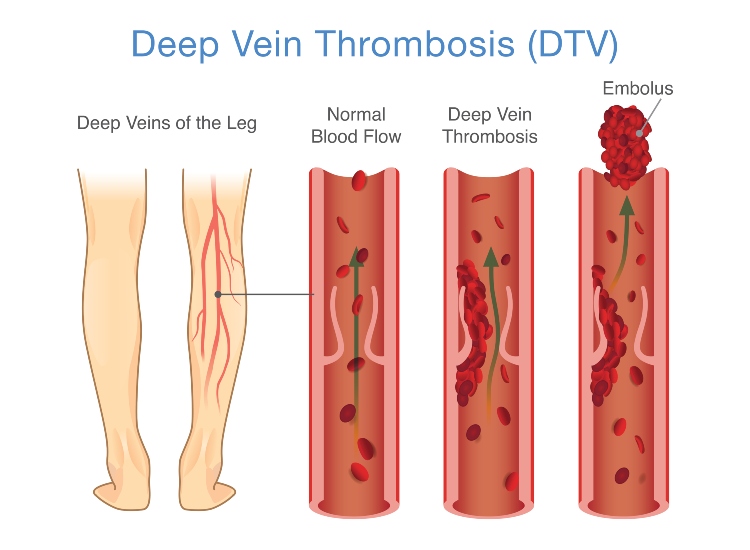Leg Vein Anatomy & Varicose Veins
The vascular system is a complex network of veins responsible for circulating blood throughout your body. Any dysfunction of this system within the lower extremities can lead to varicose veins. By understanding leg vein anatomy, you can learn why varicose veins develop and how to treat them.
Leg Vein Anatomy
The leg vein system is a complex network that returns blood from the lower extremities to the heart. It comprises three primary types of veins, each with a unique function and location within the leg.
Superficial veins located just beneath the skin’s surface are easily visible when they become enlarged or twisted. The two main superficial veins include the great saphenous vein (GSV) and the small saphenous vein (SSV).
The GSV is the longest vein in the body, running from the foot to the groin. It’s also the most likely to become a varicose vein. The SSV runs along the back of the calf, from the ankle to the back of the knee. Like the GSV, it can also be a site of varicose vein formation.
Deep veins are located within your leg muscles. They carry the majority of blood back to the heart. The primary deep veins in the leg include:
- The anterior tibial vein running along the front of the lower leg
- The posterior tibial vein situated at the back of the lower leg
- The peroneal vein running along the side of the lower leg
- The popliteal vein located at the back of the knee
- The femoral vein running through the thigh
Perforator veins connect the superficial and deep veins, allowing blood to flow from the skin’s surface to deep within your leg muscles. Perforator veins are crucial for maintaining proper venous blood flow and preventing blood from pooling in the lower extremities.
Leg veins must fight gravity to circulate blood back to the heart. This is possible thanks to one-way valves that prevent blood from flowing in reverse. When these valves function properly, they efficiently pump blood upward. However, if these valves fail or weaken, blood can pool in the legs, leading to varicose veins.
Causes of Varicose Veins
Several factors increase the risk of developing varicose veins, including age, genetics, pregnancy, obesity, and prolonged periods of standing or sitting. As venous valve function weakens, blood flow becomes sluggish, and pressure builds in the veins. This increased pressure causes the veins to bulge and twist, resulting in the distinctive appearance of varicose veins.
It’s important to seek medical attention for varicose veins, as severe complications can occur if left untreated, including venous insufficiency, leg ulcers, and deep vein thrombosis. Premier Vein & Vascular Center in Katy, TX, specializes in diagnosing and treating vein disorders to help patients in the Houston area achieve healthier, more comfortable legs.

Medical Services for Varicose Veins
Several minimally invasive procedures can treat varicose veins, providing patients with safe and effective options tailored to their needs. Some of the cutting-edge vein treatments available at Premier Vein & Vascular Center include:
- Endovenous thermal ablation: This minimally invasive procedure uses heat energy to close affected veins, rerouting blood to healthier veins. Endovenous thermal ablation is safe and effective and requires minimal recovery time.
- Ambulatory phlebectomy: This surgical procedure involves removing varicose veins through tiny incisions. The technique is ideal for treating larger, more prominent varicose veins and results in minimal scarring and downtime.
- Sclerotherapy: This non-surgical treatment involves injecting a chemical solution into the affected veins, causing them to collapse and be absorbed by the body. Sclerotherapy is a particularly effective treatment for smaller varicose veins and spider veins.
- Non-thermal vein ablation: This minimally invasive treatment uses a medical adhesive or device to close the malfunctioning veins without heat. This option is ideal for patients not well suited for thermal ablation.
These varicose vein treatments offer minimal discomfort, short recovery time, and improved leg appearance. The specialists at our vein clinic will work with you to determine the best course of action based on the severity of your condition and medical history.
Contact Premier Vein & Vascular Center
Understanding the anatomy of leg veins is essential for maintaining good vascular health. By identifying the causes and contributing factors of varicose veins, our team can effectively address your venous disorders and help you fall back in love with your legs. We’re confident our minimally invasive procedures will relieve your discomfort and improve the appearance of your varicose veins. Don’t put off varicose vein treatment any longer! Our vein center in Houston is committed to providing expert care using the latest technologies available. Please call us at 832-772-4899 to schedule a consultation, and we’ll discuss your needs as you start your journey toward a healthier, more confident future.
